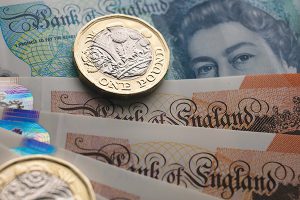Bloomberg
Few major currencies stand to lose out as much from the yen’s comeback as the British pound this year.
Investors have been dumping sterling on the view that a weakening UK economy will prevent the Bank of England from being as hawkish as its counterparts in the rest of the world.
The difference is most pronounced when compared with Japan, where years of super-easy monetary may be finally coming to an end, propelling the yen to levels against the dollar last seen in June.
The pound’s yield advantage over the yen is already waning. The spread between 10-year UK and Japanese bond yields has narrowed about 10 basis points since the Bank of Japan (BOJ) shocked markets last month by doubling the cap on benchmark yields. Meantime, the yield gap between Japanese government bonds and US Treasuries was little changed, as was the spread to German bunds.
The pound has dropped 3% against the yen since the BOJ’s policy shift. That’s biggest slide among Group-of-10 currencies and underscores the challenges the currency — fresh off its worst year since the Brexit — still faces.
“I can’t see the pound outperforming the yen this year unless something extraordinary happens,†said Kit Juckes, chief FX strategist at Societe Generale SA, who sees room for the pound-yen pair to drop to 120.
The pound-yen pair slumped to 158 in late December, the lowest in nearly three months. Rabobank’s Senior FX Strategist Jane Foley said it could reach 150 if the BOJ starts raising interest rates, which she expects to happen in the second half of the year. The pair hasn’t closed below that level since late
2021 and currently trades 4% stronger. “The pound has the capacity to soften on a broad-based view,†said Foley. “If at the same time we have the BOJ making noises that it can tweak its policy further, then we could see it fall versus the yen as well.â€
 The Gulf Time Newspaper One of the finest business newspapers in the UAE brought to you by our professional writers and editors.
The Gulf Time Newspaper One of the finest business newspapers in the UAE brought to you by our professional writers and editors.
